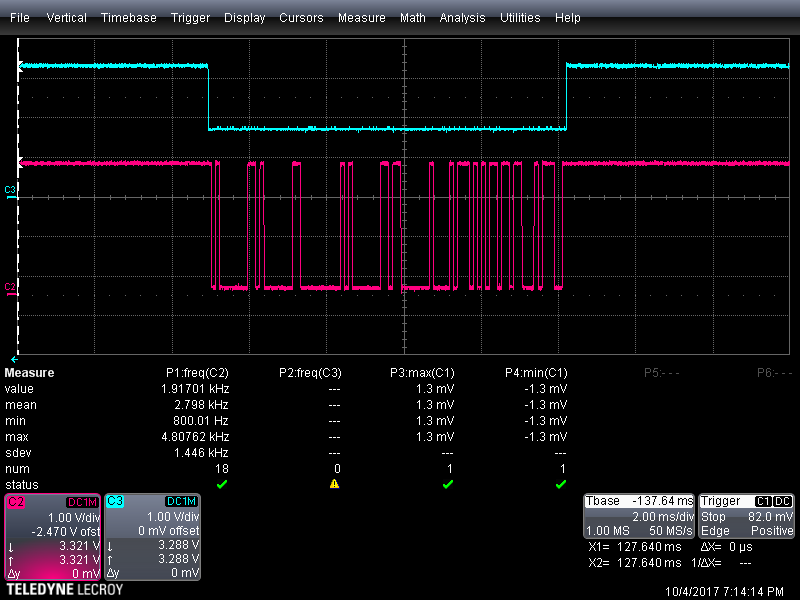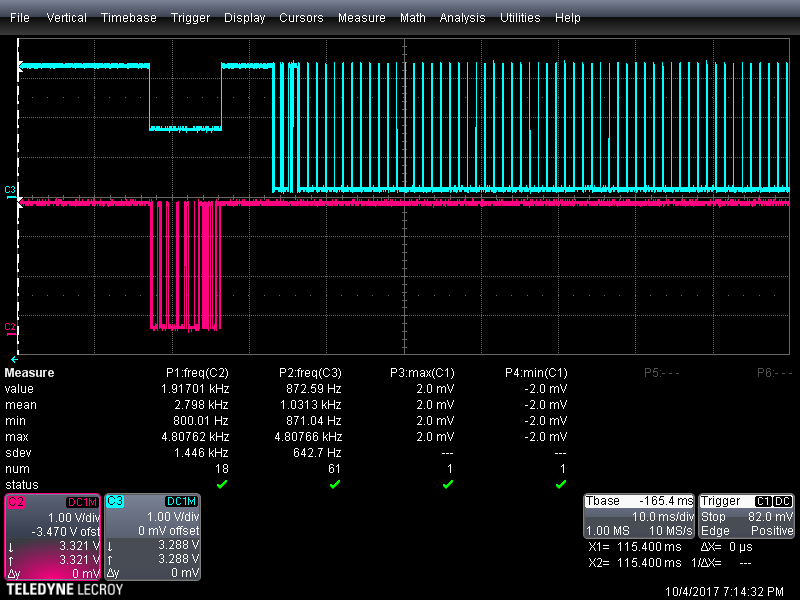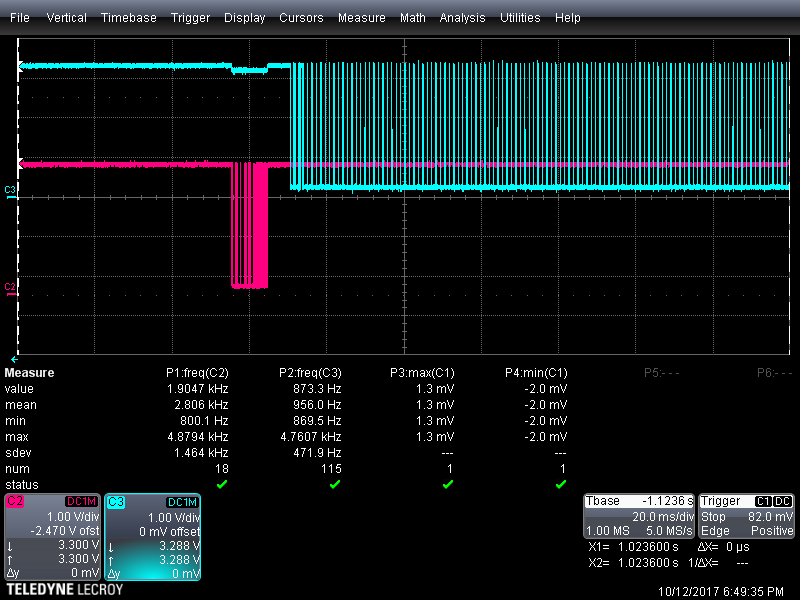HI,
We used SN65HVD1780 as the RS485 line driver in our product .While measuring the R and D wave form we found the below observation.
The R signal which is the receive signal (TTL) is having a dip when the D (transmit) signal is active . The R signal which is usually high when idle will have pulses when it is receiving .
During the reception the signal is ok and there is no Dip observed in the D line (transmit)
Please see the below graphs
Blue is R and red is D. please clarify why such a dip is observed in the R signal
Regards
Eby





